Inclusive finance
Project Goal
Dependence on others to access money signifies a lack of autonomy over personal finances. Relying on external assistance for managing funds can lead to delays, misunderstandings, and errors. It also undermines the confidence in financial transactions. To promote true financial independence, it is essential to empower individuals to manage their banking needs independently.
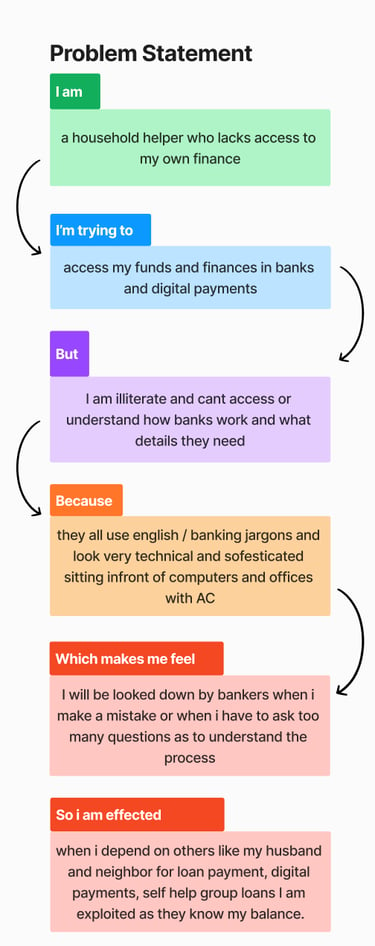



5+
Locations
30+
In-person User Interviews
15+
Survey respondents
My Role : UX strategist
Duration : 1 week
Organization : Design For Change Community
Year : 2025
About the project
Process
The Problem
Goal
Opportunity
Analysis
Concept
Market research : Understanding the existing scenario
The primary focus of this user study is to explore and understand users’ internal perceptions, mental models, and expectations regarding the functioning of the banking system. This includes examining how users believe banking processes operate, what assumptions they hold about security, transaction handling, customer service, and digital banking interfaces, as well as identifying any gaps or misconceptions between user expectations and the actual workings of the banking sector.
By gaining deeper insights into users’ internal understanding, the study aims to:
Identify common knowledge gaps or misconceptions about banking operations.
Assess how these perceptions influence user trust, satisfaction, and decision-making.
Inform the design of more intuitive banking products, services, and educational materials that align with user expectations.
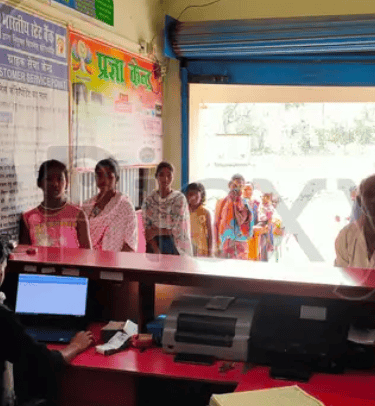

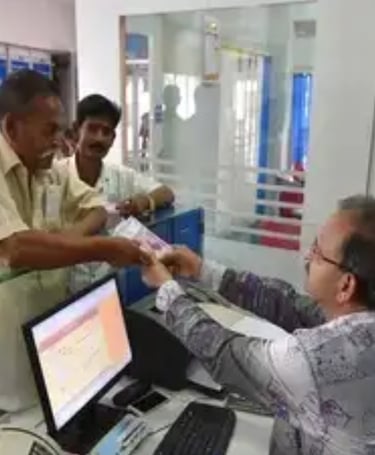

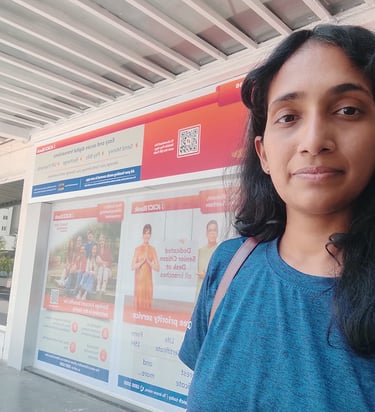



Opportunity Analysis
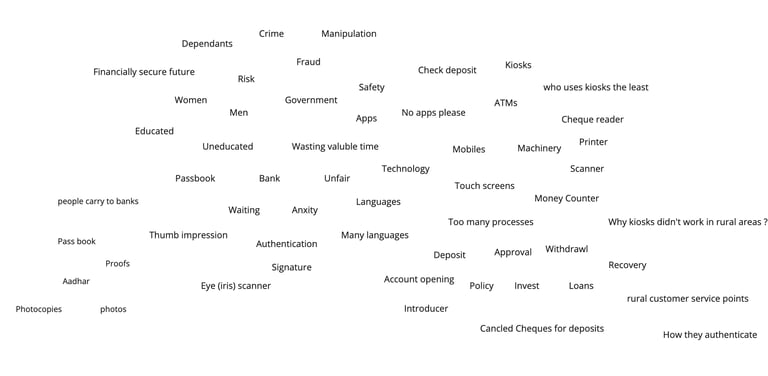

Planning and moderating group Ideation session
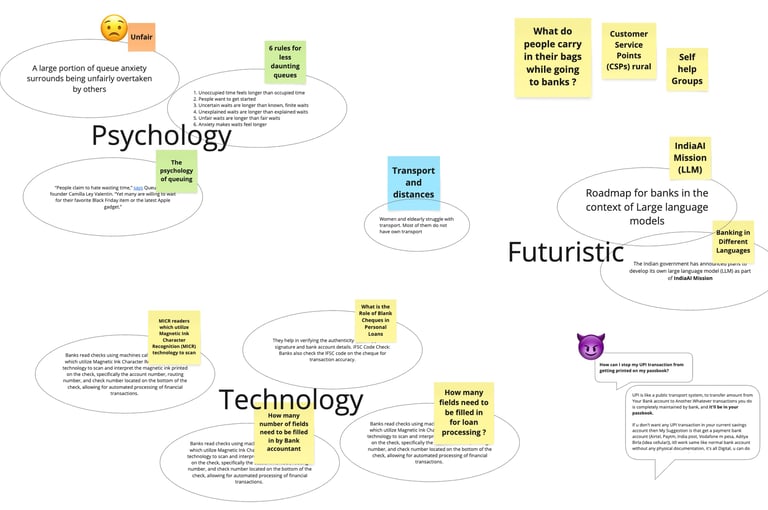

Mindmapping
Synthesize and evaluate ideas and refine project goal based on insights from the ideation session.
As it is a group brainstorming and not every individual is not comfortable sharing in a group we started with quiet brainstorming to bring in individual contributions and move to thinking out loud brainstorming and contributed as a group
Why standing in queues increases anxiety?
Research shows that how people feel while waiting matters more than the length of the wait. By leveraging the insights of queue psychology, you can ensure that your customers' user experience is a positive one.
The psychology of queuing revealed in 6 simple rules
1. Unoccupied time feels longer than occupied time
2. People want to get started
3. Uncertain waits are longer than known, finite waits
4. Unexplained waits are longer than explained waits
5. Unfair waits are longer than fair waits
6. Anxiety makes waits feel longer


Looking at the technology used in banks
Computers
MICR readers to scan
Printers
Scanners
Kiosks
ATMs
Counting machine
Stamps
Analysis

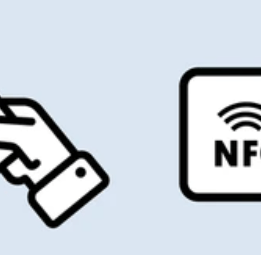
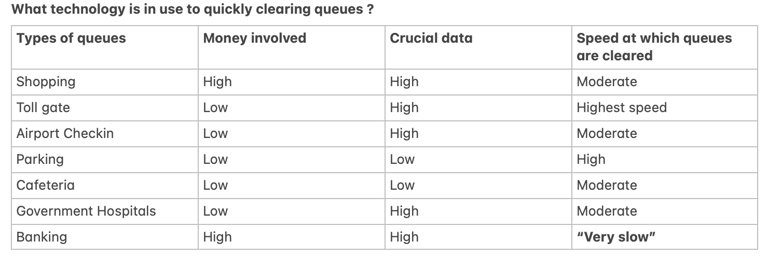

Where else do we see queues ?
1)Shopping queues
2)Toll gates queues
3)Airports queues
4)Parking queues
5)Cafeterias
6)Government hospitals
Why Banking queues are different from the queues listed above?
1)Too many processes (tasks one come for)
2)Large amount of money is involved
3)Deposit to - can take multiple paths (individual, loans, savings, FD etc)
4)Why with drawing from banks require more authentication - Can there be alternate paths and easy authentication ?
Designing for Trust & Touch-points while taking strength from Technology


Breaking Down the Barrier: Reimagining the Bank Desk for Accessibility and Trust
In traditional in-person banking, the desk itself becomes a significant barrier—especially for customers making cash withdrawals or deposits. The current setup keeps the bank’s computer screen hidden from the customer, leaving them in the dark about what’s happening during their transaction. This lack of visibility means:
Desk being the barrier
The future of Banking desks, ATMs and CSPs
Adding compact iris and face recognition modules
Increase the chance of digital Banking adaptation
Let the users see the screen
Imagine transforming the desk into a bridge rather than a barrier. By introducing a customer-facing screen that mirrors the actions being performed—using a consistent set of visual sign language cues—banks can:
Make every step of the transaction visible and understandable to the customer.
Use universally recognizable icons and gestures (including sign language) to explain what’s happening, in real time.
Provide confirmation and transparency, so customers know exactly what is being done with their money.
Offer passive learning opportunities while customers wait, building familiarity with banking processes and digital interfaces.
If this visual “sign language” is maintained consistently across all branches and interactions, over time, even users with limited literacy or accessibility challenges can become comfortable and independent in managing their finances. This approach not only empowers customers to act independently but also lays the foundation for a smoother transition to digital self-service banking, where the same visual cues and language can be reused.
A New Approach: Customer-Facing Screens with Consistent Sign Language
I
Why It Matters
Accessibility: Consistent sign language and visual cues help people with hearing loss, limited vision, or language difficulties navigate banking confidently712.
Learning and Empowerment: Customers learn banking processes by seeing and understanding them, reducing dependency on staff.
Trust and Transparency: Real-time, visible confirmation of actions builds trust and reduces anxiety or confusion.
Designing for
Trust & Touchpoints


Designing for Trust & Touchpoints while taking strength from Technology and Transactions
Designing for Trust & Touch-points while taking strength from Technology and Transactions
Desk being the barrier
Let the users see the screen
The future of Banking desks, ATMs and CSPs
Adding compact iris and face recognition modules
Over a period of time build familiarity with sign language for banking transactions
Increase the chance of digital Banking adaptation
Takeaway & Next steps
Digital Training
Tools-such as emulators or simulators-at bank branches, ATMs, and Customer Service Points (CSPs) can be a highly effective way to help amateur banking users overcome their fear of making mistakes.
Write a short text about your service
Write a short text about your service
Service title 2
Service title 3
Scaling up the study will provide deeper insights necessary to make the system design more flexible and adaptable across diverse scenarios.


